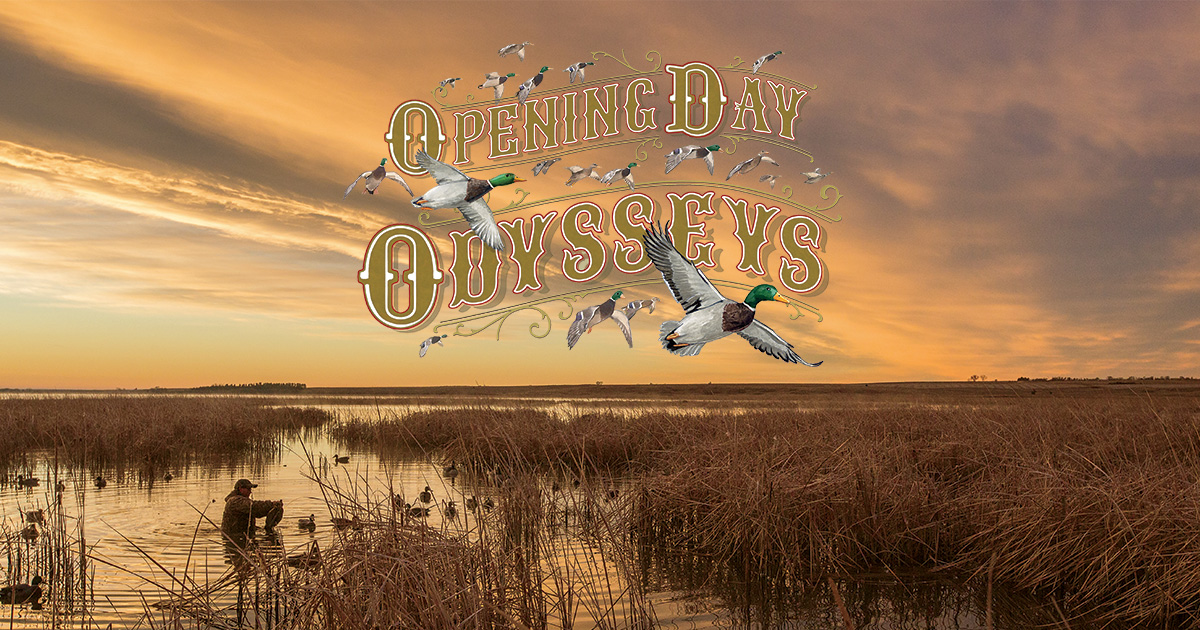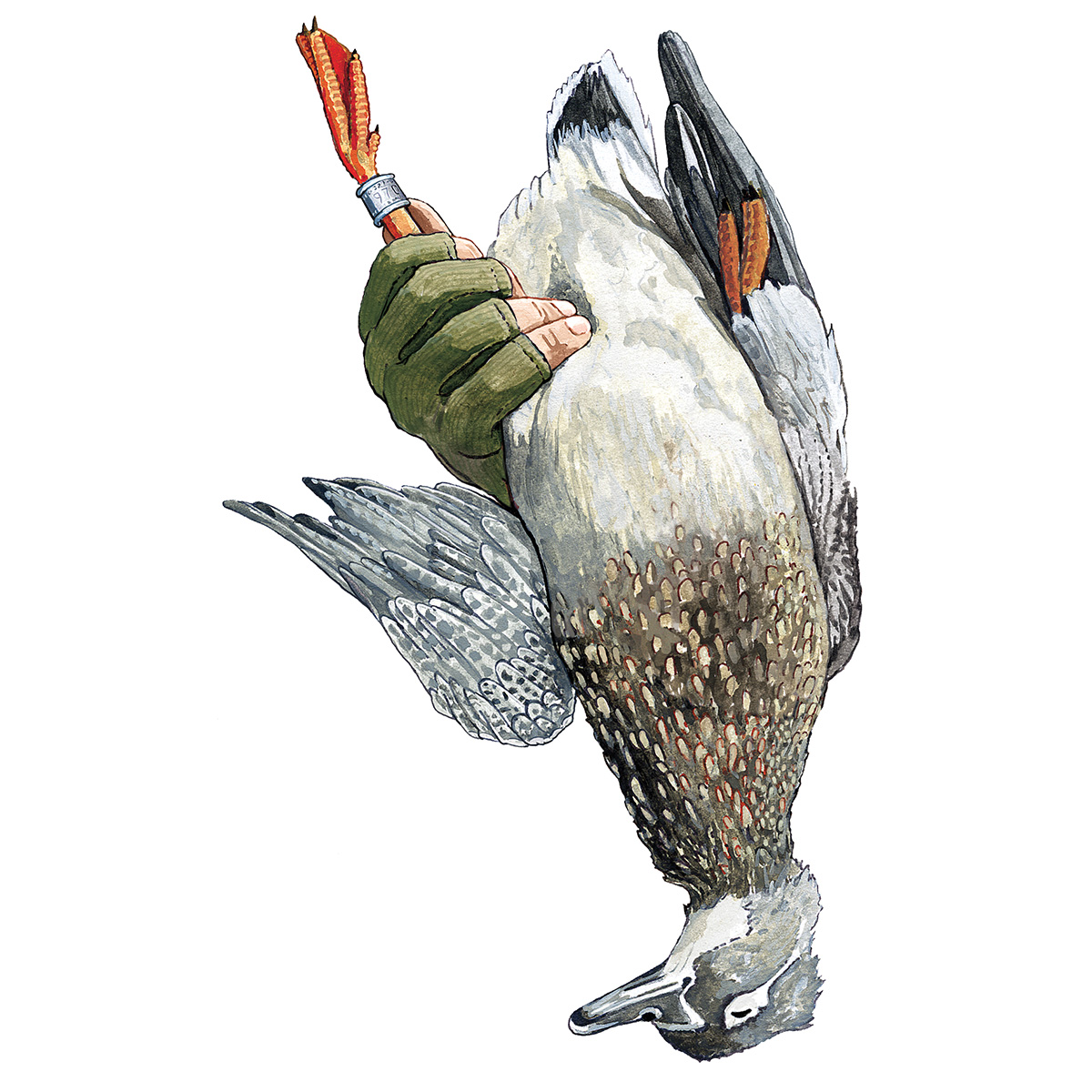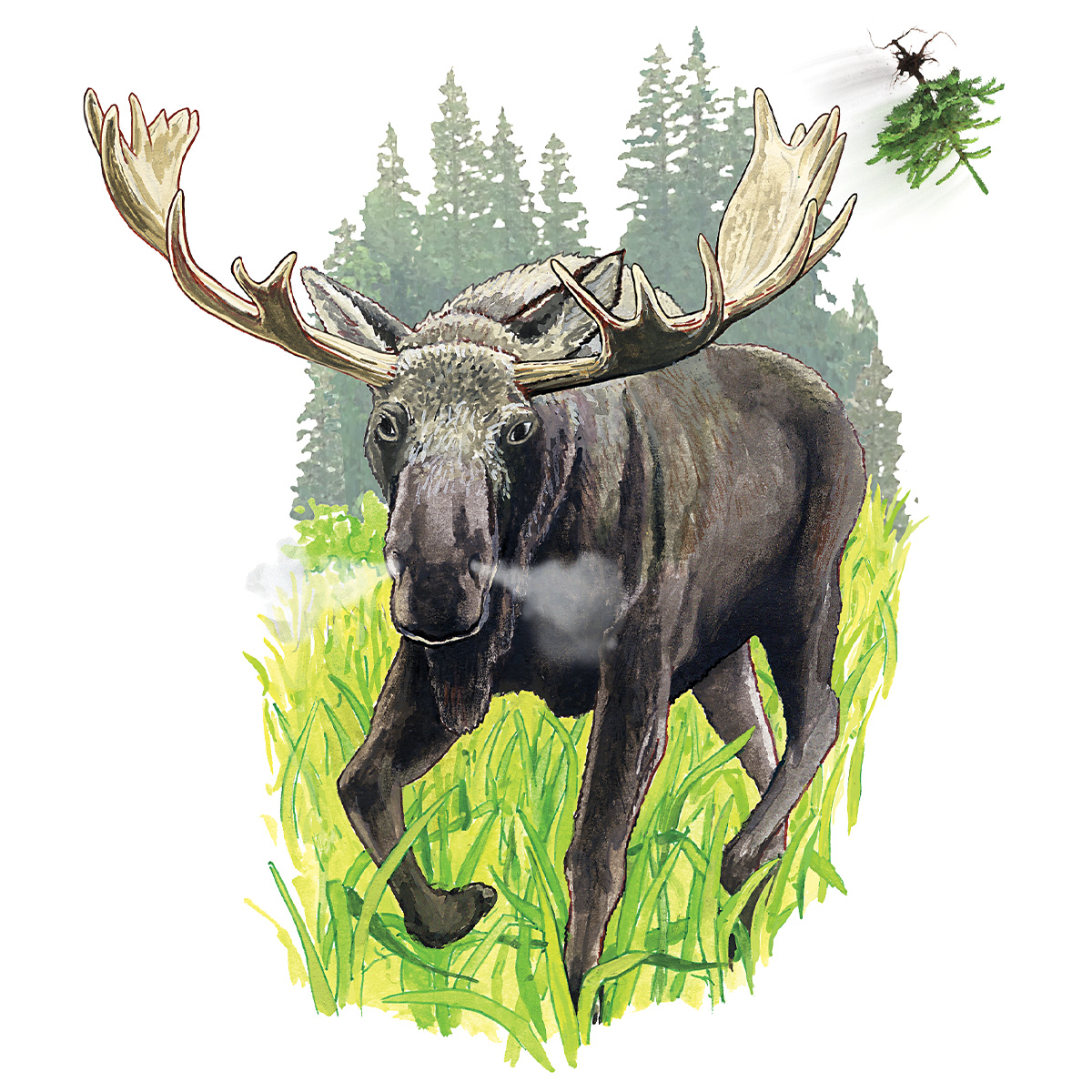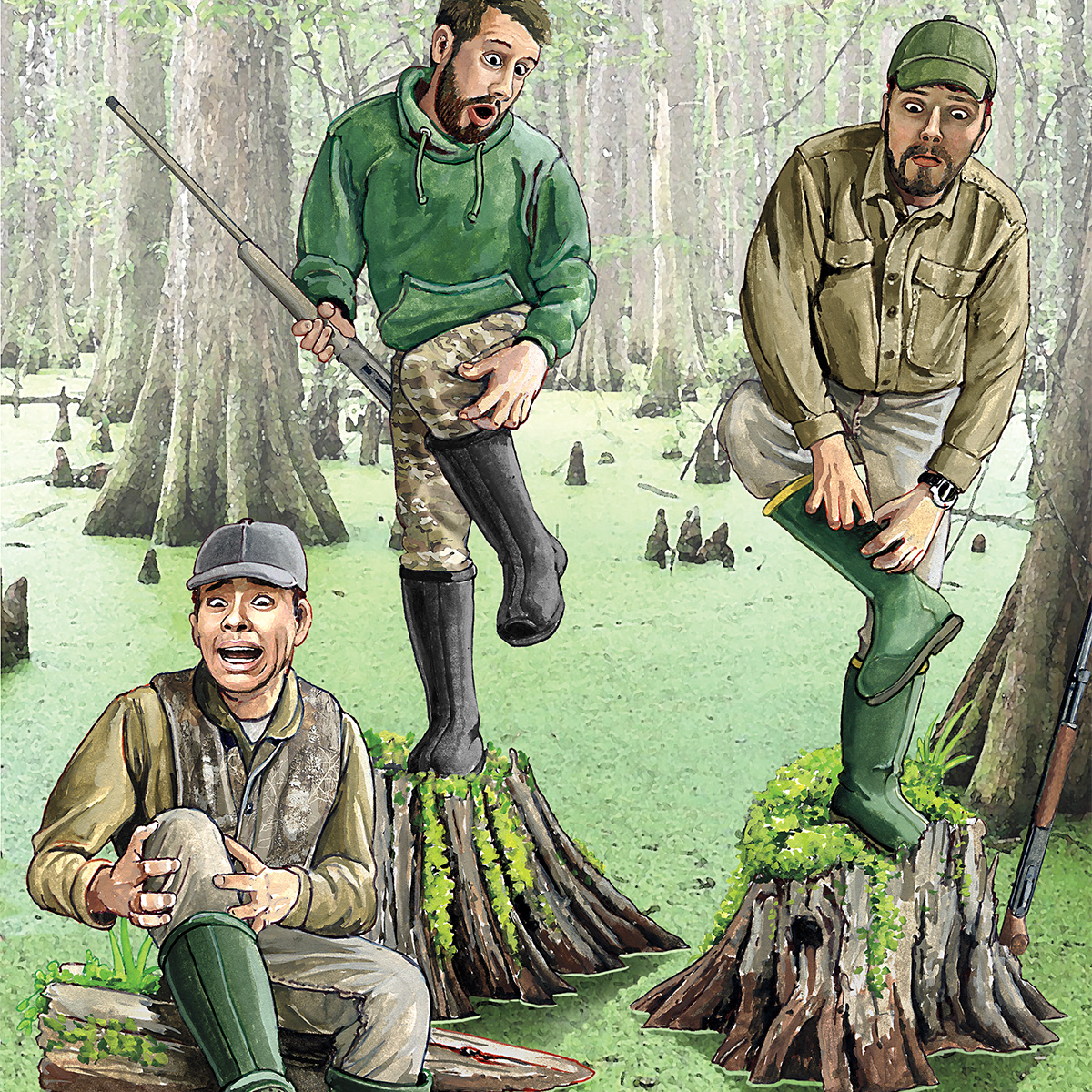Opening Day Odysseys
It’s the most anticipated day of the year . . . and often the most memorable too
It’s the most anticipated day of the year . . . and often the most memorable too


Truth be told, not all opening days go according to plan. Sometimes the weather conspires against us. Other times the demands of life and work suck all the fun out of the greatest day of the year. And too often the duck gods feel frisky and take great pleasure in toying with our hopes and dreams.
But every so often—just often enough to keep us hard at it and keep our opening-day dreams of greatness alive year after year—something magical happens in those few hours after the sun rises on a new duck season. Something unforgettable. Something that might not have anything to do with waterfowl but sparks a story that gets passed down in duck camps and around dinner tables for years.
And sometimes that something is entirely unexpected, as you’ll read in these four tales of opening days that will never be forgotten.

Noah Landstrom didn’t realize how lucky he was. He was doubly lucky, in fact. The Army Reservist and IT salesman had been trying to arrange his first-ever duck hunt with Travis Thompson, but Landstrom was always traveling or Thompson was always booked. Helping waterfowlers get started is a passion of Thompson’s. A Florida duck hunting guide and host of the Cast & Blast Florida podcast, he has personally guided some 300 hunters to their very first duck. “All ducks are special,” Thompson says, “but you can’t kill any of them until you kill that first one.”
When a late cancellation on 2018’s opener put some daylight in his guiding schedule, Thompson reached out to Landstrom. That was the first strike of lucky lightning for the novice duck hunter. The next would be just as memorable.
At shooting light, wood ducks, ringnecks, teal, and mottled ducks buzzed the decoys from all directions. Landstrom struggled with connecting. After an hour-and-a-half, shells littered the bottom of the boat but no birds had fallen.
Then a trio of woodies buzzed in low, hooked around the boat, and landed not 10 yards from the hunters. “I call these kinds of birds manna ducks,” Thompson laughs. “They fly down from the heavens when you need them most.” Landstrom knocked down one of the three ducks—a hen woodie. After a round of congratulations, Thompson waded out to retrieve the bird. When he lifted it off the water, he saw the glint of a leg band.
“I couldn’t believe it,” Thompson says. “I hollered out, ‘Holy crap, it’s a banded duck!’”
That’s a species Landstrom had never heard of. Back in the boat blind, he shook his head. A banded duck? That didn’t sound so great. He was hoping for a wood duck.
“I thought a banded duck might be a bird with a ring around the bill or something,” he laughs. “You really wouldn’t believe how clueless I was about ducks.”
“He didn’t realize the significance of killing a banded duck,” Thompson laughs. He told Landstrom that shooting a banded duck on your first try was the hunting equivalent of catching a 12-pound bass on your first cast.
Landstrom is clueless no longer. Instead, he’s fired up by the experience and inspired by Thompson’s generosity. “I didn’t know a single thing about duck hunting, and that lack of knowledge is a giant barrier to entry,” he says. “Where you can and can’t go, what you can and can’t shoot—it’s all pretty intimidating. You can watch a million YouTube videos, but being out there with someone like Travis is the best way to learn. This year, I’m going into duck hunting at full speed. And I’m bringing some buddies along with me.”

Michael Salomone doesn’t frighten easily, but when it comes down to a cage match with a full-grown bull moose—and a particularly randy one, at that—he knows when he’s outgunned. “Buddy, it was scary,” he recalls.
An art teacher, fly-fishing guide, and columnist for the Vail Daily in Vail, Colorado, Salomone is no stranger to wild country. He starts his duck season off in the high elevations, close to 10,000 feet, and follows the freeze line down the mountains. On the opening day of Colorado’s 2015 duck season, Salomone had set up on a secluded pond a mile off the road, and the morning looked promising. “A scout came in—a single teal—and I let it land,” he remembers. The bluewing was soon joined by mixed groups of teal and mallards, and Salomone dropped two—a mallard that went down in the pond and a teal that went down in the trees behind him. “A good start,” he thought—alone in the high country, where few venture after waterfowl.
As he waded into the pond to retrieve the greenhead, Salomone saw a moose push out of the lily pads on the far side of the pond. “It was a big bull,” he adds. “But I didn’t think too much about it.”
As Salomone waded deeper into the pond, he spotted a second bull moose. This one was on his side of the pond. “It was a lot closer,” he noted. “And trotting toward me.”
Salomone started yelling. He didn’t want to tangle with a rutting moose, and he sure didn’t want to get caught between two bulls looking for a fight. The bull kept coming. When it was about 80 yards away, Salomone fired his shotgun into the air. The moose put his head down and picked up speed. Salomone fired twice more. The moose didn’t waver. “I was struggling to get away from the moose and out of the pond,” Salomone explains. “My arms were buried in the muck, and I clawed my way up the bank into a small stand of pines.”
The moose closed the distance.
“Oh, buddy, I could see his antler tips coming,” Salomone says. “And then, between the saplings, I saw his wattle swinging back and forth. I swear I could see his eyelashes. He was 15 feet away, angry, and looking for me. He knew I was there, but he couldn’t find me. That’s when I realized he probably thought I was that other bull.”
The moose snapped an entire young pine tree out of the ground and hurled it through the air.
“By then I was scared to death,” Salomone admits. “He was blowing snot out of his nose and just getting more and more irate.”
Another pine went flying. Then, after a few more minutes of thrashing brush and snapping trees, the bull eased off. Salomone stood in the little copse of pine, shaking.
“It was an interesting way to start the season,” he laughs. But it is a nervous laugh, even today. “And I will say this: My wife won’t let me go back up there anymore.”

The Hotel Blind is built around a Mississippi Delta cypress tree as wide as a pickup truck in a stretch of big woods that B.C. Rogers III calls “a land before time—one of those places where you know the ducks have been going for thousands of years.” Rogers’s father built the blind more than 40 years ago. Twenty years ago, the younger Rogers, who is the founder and owner of sporting equipment company Wren & Ivy, rebuilt the blind himself. He first hunted the blind in 1983, when he was five years old. And for more than four decades it’s where he’s spent the opening morning of Mississippi’s duck season.
None were more memorable than on opening day two years ago.
Rogers was in the blind with his two young children—his daughter, Wren, and son, Ivy—and a slew of family members, including his wife, mom, dad, sister, and brother-in-law with his own four kids. Ivy had spent many mornings in the blind, but this opening day was different. He was ready to hunt. When Rogers turned on the lights that morning at 3:45, Ivy was standing at the foot of his bed, fully dressed and in his waders.
To be honest, Rogers says, Ivy’s first duck was a bit anticlimactic. A pair of gadwalls landed and then flushed. Ivy shot. “The duck might have still had a foot on the water, or at least a toe.”
There was a celebration in the blind, of course. Three generations hunting together; a torch passed. But it was also opening day, and it was time to get serious. “With the monkey off our back,” Rogers says, “we all thought: ‘OK. Now we can really hunt.’”
Which is when two wood ducks came screaming in. “You know how it goes,” he says. “You just have a split second. There’s really no time to plan.” Rogers rose, fired once, and dumped the lead bird. That’s when he heard a shot to his left.
“To be honest, it startled me,” he recalls. “And I looked over at Ivy and said, ‘Buddy, don’t shoot unless I tell you to, OK?’ I didn’t think he had actually hit anything.”
The blind went quiet for a moment. Then a voice boomed out.
“Well, he killed it, didn’t he?”
Rogers laughs. “That was my father. And what he was trying to tell me was: ‘Son, this is a big dad moment for you. Don’t screw it up.’”
Rogers reset. He realized that his son had made a clean, safe shot standing in the same spot and in the same blind and using the same kind of gun that he himself had used when he killed his first duck 38 years earlier. “And with the same old duck-hunting married couple looking at him,” he says softly. And he realized that things would never be the same.
“When you give a young person a gun, you’re entrusting them with a huge responsibility,” Rogers explains. “From their very first hunts, children see the mutual respect adults offer each other. Then, when they are given a role in that world, it establishes a new dynamic between the parent and the child. There’s a different kind of trust.”
Looking back, Rogers recalls growing into that new kind of relationship with his father, and he remembers it as a true waypoint on his journey to becoming an adult. “Duck hunting isn’t the only way you can build those kinds of relationships,” he figures. “But I can’t think of a better way.”

Some opening days you’ll never forget. Even if you want to.
Clyde Sorenson was a senior in college in 1979, planning a pretty straightforward opening day wood duck hunt. Three buddies and a small beaver swamp. What could go wrong?
Except the swamp was overgrown and stagnant. Maybe even fetid. And the three poor college students didn’t have a pair of waders between them. “But we were tough kids,” Sorenson says. “It was no big deal.” They wet-waded into the muck and waited on daylight.
It was about 30 minutes before shooting light when Sorenson’s pal, Scott McNeely, mentioned that his legs were itching. He figured that his long johns, soaked with swamp water, were irritating his skin. “But pretty soon he was howling that his legs were on fire,” Sorenson laughs. “And then he jumped up on a stump and started scratching like crazy.”
About that time, the other hunter, Jim Filling, chimed in. His legs were burning up too. Soon they were both balanced on slick stumps in the swamp, howling and scratching their legs. “I was laughing my head off,” Sorenson says, “because I didn’t have on long johns. I figured I was in the clear.”
He was not.
As it turns out, there is a tiny parasitic flatworm that is particularly fond of fetid swamp water. While it is too small to take much of a bite out of a human hide, that doesn’t stop it from trying.
Soon, Sorenson had his comeuppance. He was also up on a stump, scratching and swatting like a madman. Picture that for a moment: Three young college toughs, bathed in the golden light of dawn, tap-dancing on swamp stumps.
In spite of all this, at some point a single wood duck was felled. But the itching continued until the trio crossed a second swamp on the way back to their vehicles. The colder, cleaner water stunned the flatworms, Sorenson figures, and put an end to the misery.
Being young scholars, the boys did a bit of research when they got home.
“We figured it out,” Sorenson says, although not very triumphantly. “It’s called ‘nutria itch’ or ‘beaver itch.’ It’s a nasty, bizarre thing. Look it up. We did.”
Maybe we should just take his word for it. After all, Sorenson would go on to get his doctorate in entomology and is now a professor and entomologist with North Carolina State University. A bug scientist. A guy who just can’t get enough of the creepy crawlies.
Some people—even the really smart ones—never learn.
Ducks Unlimited uses cookies to enhance your browsing experience, optimize site functionality, analyze traffic, and deliver personalized advertising through third parties. By continuing to use this site, you agree to our use of cookies. View Privacy Policy